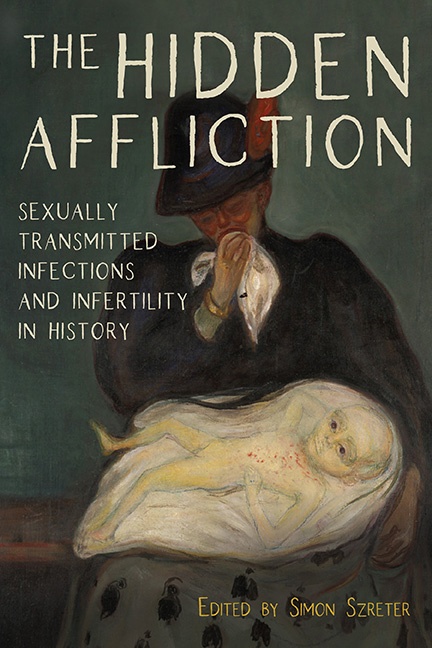Book contents
- Frontmatter
- Contents
- Acknowledgments
- Introduction
- Part One The Hidden Pitfalls in the Early Documentary Record
- 1 (The Wrong Kind of) Gonorrhea in Antiquity
- 2 “Poxt and Clapt Together”: Sexual Misbehavior in Early Modern Cases of Venereal Disease
- Part Two The Biomedical Sciences and the History of the STI Microorganisms
- Part Three Population Decline in the Global South
- Part Four Infertility and the Specter of Venereal Diseases in Modern Europe
- List of Contributors
- Index
1 - (The Wrong Kind of) Gonorrhea in Antiquity
from Part One - The Hidden Pitfalls in the Early Documentary Record
Published online by Cambridge University Press: 25 March 2020
- Frontmatter
- Contents
- Acknowledgments
- Introduction
- Part One The Hidden Pitfalls in the Early Documentary Record
- 1 (The Wrong Kind of) Gonorrhea in Antiquity
- 2 “Poxt and Clapt Together”: Sexual Misbehavior in Early Modern Cases of Venereal Disease
- Part Two The Biomedical Sciences and the History of the STI Microorganisms
- Part Three Population Decline in the Global South
- Part Four Infertility and the Specter of Venereal Diseases in Modern Europe
- List of Contributors
- Index
Summary
Historiography and Methodology
Studying the relationship between disease and fertility in antiquity is challenging. The first difficulty is establishing the presence, and then prevalence, of any particular condition before an assessment can be made of its demographic impact. In the case of what are now called sexually transmitted infections (STIs), the empirical obstacles to identifying such infections in the classical world are exacerbated by the moralizing that attends discussions of sexual practice and that has so strongly characterized the ways sexual behavior and pathology have been, and continue to be, conceptually conjoined. Julius Rosenbaum's influential and exhaustive nineteenth-century exploration of the ancient history of syphilis (broadly construed), for example, is based on the assumption that venereal diseases are caused by the “abuse” of the genital organs for nonprocreative purposes. Their history is, therefore, the history of human “lasciviousness and debauchery,” and there was so much of that in classical Greece and Rome that syphilis and all kinds of genital afflictions necessarily followed.
More methodologically reputable approaches to the problem of past disease presence are threefold. The first is retrospective diagnosis, based primarily on the written sources surviving from a historical society, in which the descriptions of various ailments are critically assessed against modern clinical accounts and understandings. Paleopathology provides the second, focused on the analysis of the biological remains of that society, mostly on osteological scrutiny of skeletal evidence, but also increasingly on the study of ancient DNA (aDNA). Third, the development of next-generation gene-sequencing technologies and advances in Bayesian phylogenetics over the past decade have led to a dramatic increase in molecular clock–dating studies, including various key pathogens: it is now possible to produce a reasonably robust evolutionary timeline for present populations of microbes from genomic data about those populations, and more historical samples are now available. All these techniques and approaches have their strengths and weaknesses; they are best combined and, of course, ultimately reliant on the availability and quality of the evidence itself.
In terms of retrospective diagnosis from ancient texts, there has been much debate among medical historians and physicians, often with a classical education and interests, about whether modern syphilis, gonorrhea, or any other genital affliction was present in antiquity. In the early years of the twentieth century, syphilis found no champions, but views were more divided on gonorrhea, which is the focus here.
- Type
- Chapter
- Information
- The Hidden AfflictionSexually Transmitted Infections and Infertility in History, pp. 43 - 67Publisher: Boydell & BrewerPrint publication year: 2019
- 1
- Cited by

